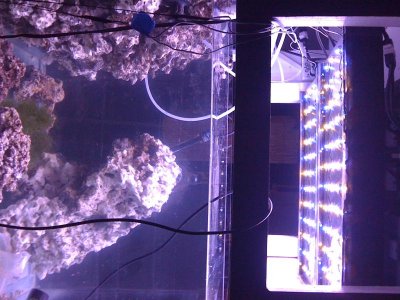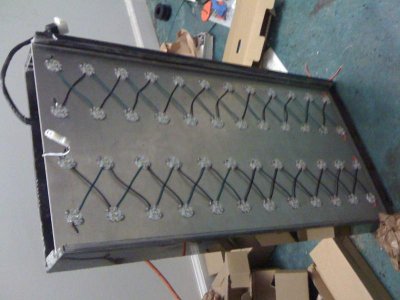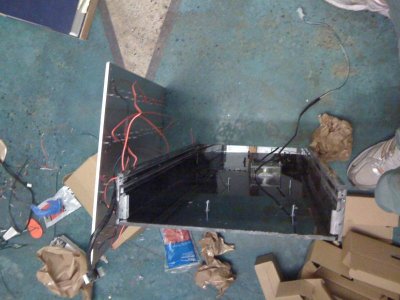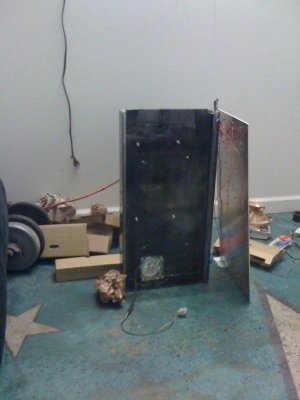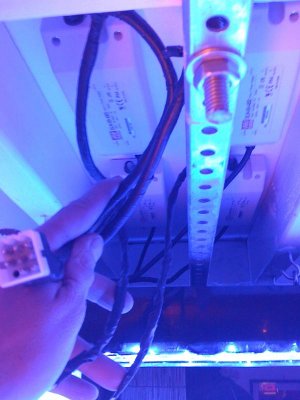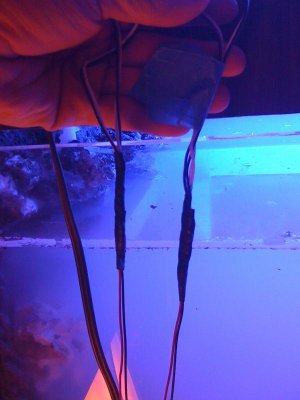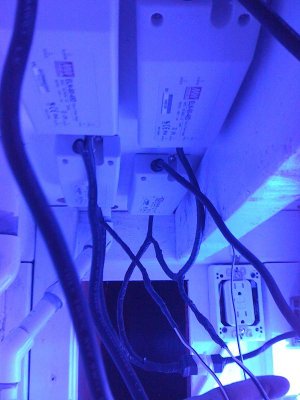thanks, I had not thought to check that. However wouldn't the amps increase with the number of LEDs I have but the voltage remain identical based on the input of the dim circuit.
Nope, not quite.
An LED has a VERY STEEP but more or less fixed V/I curve - in other words, if you change voltage, the current will change. If you change current, the voltage will change - it's a fixed relationship, you can't change one without altering the other.
Drivers work by sensing the current on the LED string, and adjusting the voltage up or down to keep the current at some target level. The voltage the driver will need to produce to hit some arbitrary drive current is dependent on the total Vfs of the LEDs in the string for that target current.
So, as you adjust the target current, the driver will produce more or less voltage to get the current in the string to the new target value. As you change the properties of the LED string (i.e. add more or fewer LEDs, change the temperature it operates at, etc.), the driver will produce more or less voltage to keep the current the same.
Note that the current is set independent of the number or type of LEDs. If you set up a driver to provide 700mA, it will ALWAYS provide 700mA, regardless of the number of LEDs you connect to it in series, assuming your LED count doesn't exceed any of the specs for the driver. As you add more LEDs in series, the thing that changes is the voltage the driver will need to produce to hit the target of 700mA current.
HOW you go about adjusting the target current is a bit more complicated, especially with a meanwell ELN because there are basically two methods provided. The intention is that you would use the internal trimpot to set a maximum current for your string, then use the external dimming signal to adjust down from there based on your operational needs (i.e. simulating sunrise, etc.)
I dont have a par meter and this is a new setup, how can I gauge how much light is enough/too much?
Trial and error with your livestock, or just double-check that your LED count, current, optic choice, height above the water, etc. is all relatively close to what other people are using who have the same LEDs as you. There have been enough of these builds now that it should be pretty straightforward to get a rough verification.

